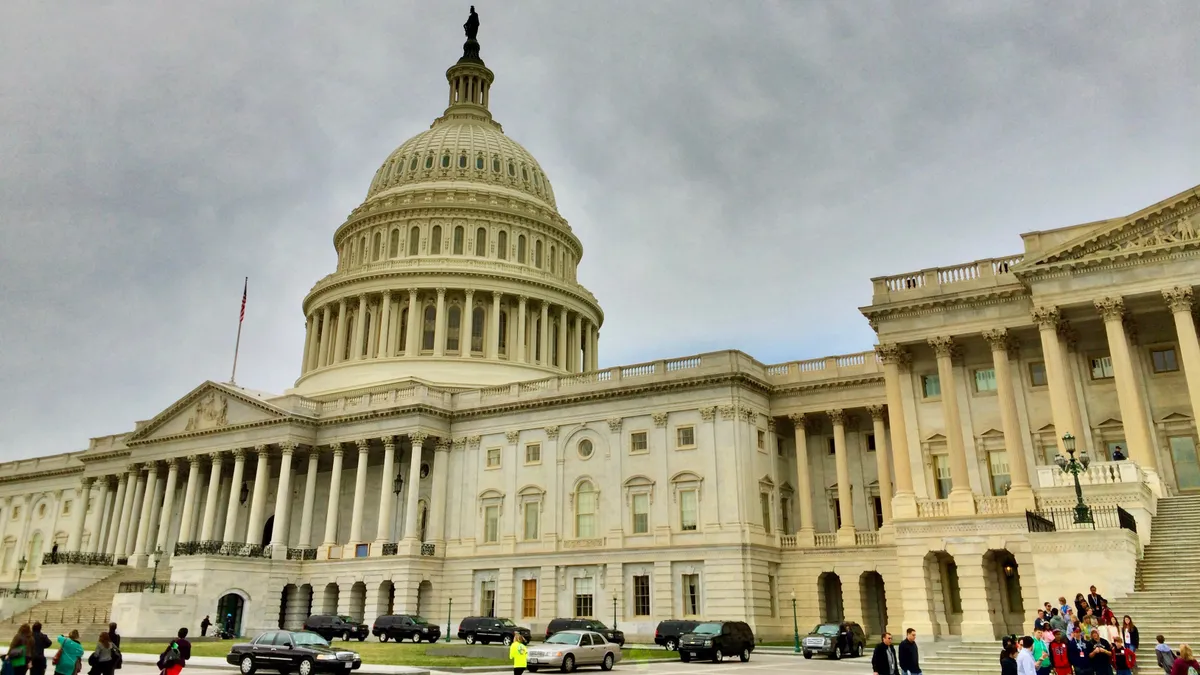Dive Brief:
- Federal investment in the nation's infrastructure needs a new "purpose" that focuses on outcomes that have longer-term impacts on the whole population and the issues they face, rather than individual projects, according to a report out Tuesday from the Brookings Institution.
- The report on rebuilding "with purpose" urges the Biden administration and Congress to imagine a more coordinated and integrated vision for infrastructure that considers the threat of climate change and the need to build resiliency as well as improving residents' digital connectivity to take advantage of the changing economy.
- Brookings recommended that lawmakers update how they measure infrastructure needs and connect that information to shared goals, experiment with new funding mechanisms, update design standards and other guidelines, and look to have the federal government experiment more, including with emerging technologies.
Dive Insight:
President Joe Biden's American Jobs Plan aims to invest $2 trillion in the nation's infrastructure, which has been described by some as "crumbling." The American Society of Civil Engineers (ASCE) warned in its latest report card that the United States faces a 10-year $2.6 trillion funding gap, with significant work required across all sectors to reduce that shortfall and improve the country’s standing. And this week the Biden administration released a breakdown of each state's infrastructure needs, a move it said showed the "urgent need" for the proposal.
But Adie Tomer, a Brookings fellow and the report's lead author, said the viewpoint that the United States' infrastructure is "crumbling" does not tell the whole story. Instead, he said the country's infrastructure should be seen as "failing," as it is not helping people work and live to their full potential, or preparing them properly for the future. Broadband internet is one such example of infrastructure that is not equally available nationwide, but has been highlighted as a critical sector for investments during the coronavirus pandemic, according to Tomer.
"That's not about broadband crumbling, that's about an incomplete job, I would say, in terms of buildout and making sure the service is accessible to everyone," Tomer said. "[The] importance of the infrastructure debate in the United States right now, which is obviously running through Washington, but runs right down right into state capitals and cities all over the country, is how do we use this as an opportunity to prepare ourselves for the future?"
Elected leaders have made similar calls for the U.S. to rethink infrastructure, including from Louisville, KY Mayor and U.S. Conference of Mayors President Greg Fischer, who said last week officials must "redefine what infrastructure is" or they risk the country falling behind its global competitors. And there are some indications a shift in thinking is underway, both in Biden’s plan and in legislation like the recently introduced Leading Infrastructure For Tomorrow's America (LIFT America) Act.
But that mindset shift needs to be more widespread if real progress is to be made in shaping the country's infrastructure and preparing it for the next 50 years, the report says. Previous legislative packages, like the American Recovery and Reinvestment Act of 2009, have come under fire for prioritizing so-called "shovel-ready" projects which could start construction quickly with extra funding.
Instead, Tomer said leaders should prioritize outcomes when they decide how to direct infrastructure spending. That could mean investments that help a coastal community be more resilient and manage the chronic impacts of climate change, or invest in growing the digital skills of an underserved population so they can improve their lives. That would represent a change in thinking beyond simply building new projects, which can sometimes not have the intended long-term effects, he said.
"Once you lay a road, the quality of the materials may change, but where it is will last for generations on generations," Tomer said. "Not only am I kind of averse to shovel-ready, it's that we need to make sure these are worthy projects, because once they're built, it is very hard to undo them."
In guiding infrastructure investment, Tomer said the federal government can play a leading role, including in research and development of emerging technologies that could be crucial in the future like autonomous vehicles and artificial intelligence, or small changes to building materials.
Finding new ways to fund infrastructure also requires a new mindset, according to the report. And while it says public-private partnerships will play a role, other methods are needed too. That could include encouraging greater use of tax increment financing to stimulate economic development, and also through, for example, flood insurance, which is typically purchased through the federal government. While most infrastructure decisions are made locally, Tomer said the federal government could use mechanisms like that to influence behavior.
"How do we make sure that those rates send the right pricing signal to households and businesses who are financing their real estate development to make sure that we steer development towards more resilient places?" Tomer said. "That's a method, and that ends up influencing infrastructure directly because, of course, wherever you build real estate, you're going to build infrastructure."












